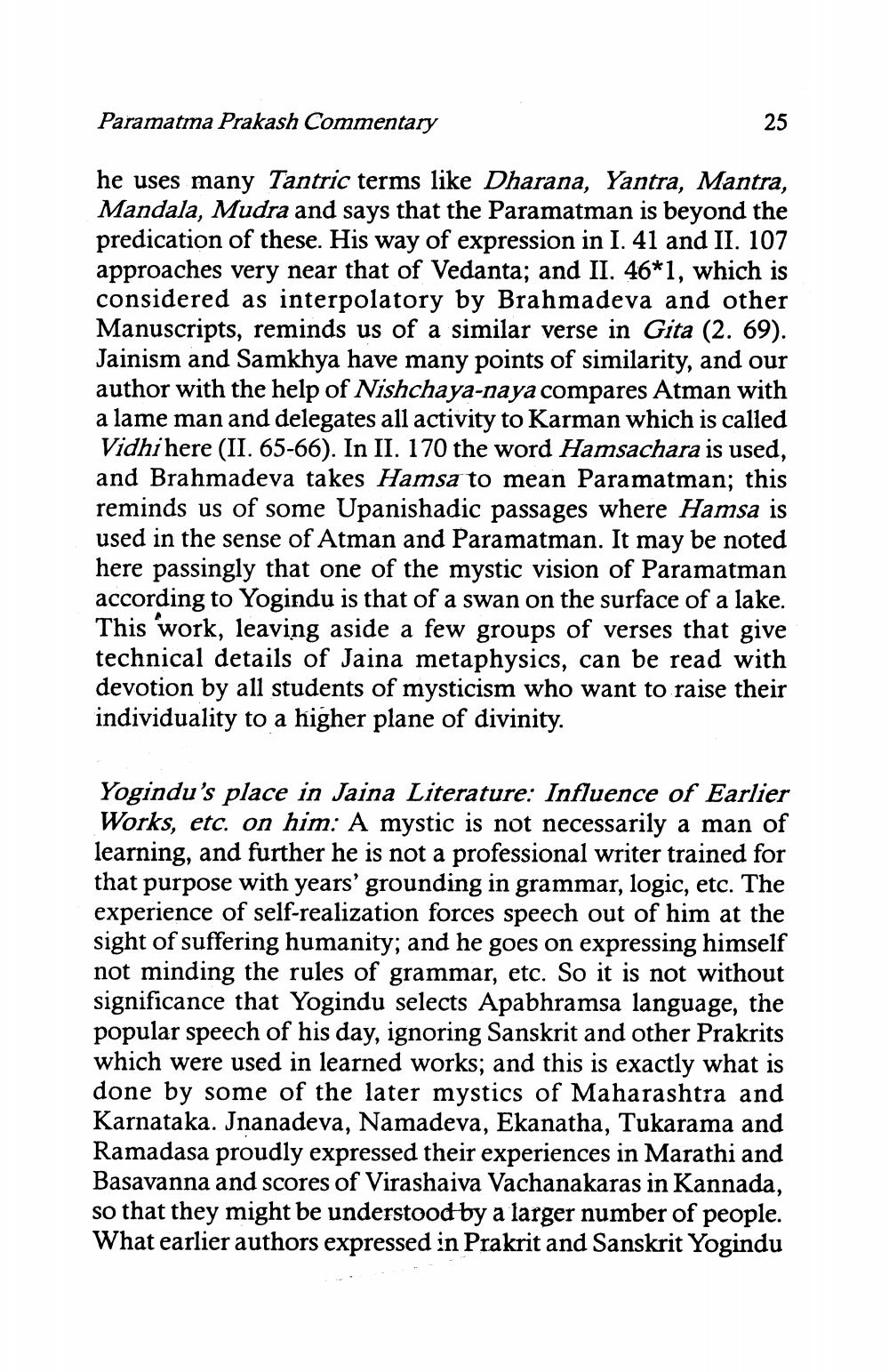________________
Paramatma Prakash Commentary
he uses many Tantric terms like Dharana, Yantra, Mantra, Mandala, Mudra and says that the Paramatman is beyond the predication of these. His way of expression in I. 41 and II. 107 approaches very near that of Vedanta; and II. 46*1, which is considered as interpolatory by Brahmadeva and other Manuscripts, reminds us of a similar verse in Gita (2. 69). Jainism and Samkhya have many points of similarity, and our author with the help of Nishchaya-naya compares Atman with a lame man and delegates all activity to Karman which is called Vidhi here (II. 65-66). In II. 170 the word Hamsachara is used, and Brahmadeva takes Hamsa to mean Paramatman; this reminds us of some Upanishadic passages where Hamsa is used in the sense of Atman and Paramatman. It may be noted here passingly that one of the mystic vision of Paramatman according to Yogindu is that of a swan on the surface of a lake. This work, leaving aside a few groups of verses that give technical details of Jaina metaphysics, can be read with devotion by all students of mysticism who want to raise their individuality to a higher plane of divinity.
25
Yogindu's place in Jaina Literature: Influence of Earlier Works, etc. on him: A mystic is not necessarily a man of learning, and further he is not a professional writer trained for that purpose with years' grounding in grammar, logic, etc. The experience of self-realization forces speech out of him at the sight of suffering humanity; and he goes on expressing himself not minding the rules of grammar, etc. So it is not without significance that Yogindu selects Apabhramsa language, the popular speech of his day, ignoring Sanskrit and other Prakrits which were used in learned works; and this is exactly what is done by some of the later mystics of Maharashtra and Karnataka. Jnanadeva, Namadeva, Ekanatha, Tukarama and Ramadasa proudly expressed their experiences in Marathi and Basavanna and scores of Virashaiva Vachanakaras in Kannada, so that they might be understood by a larger number of people. What earlier authors expressed in Prakrit and Sanskrit Yogindu




